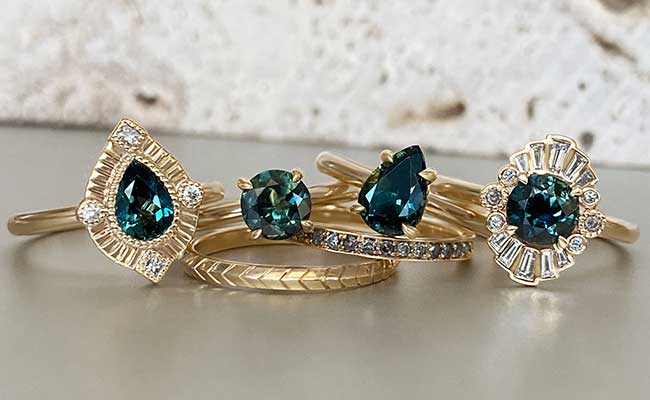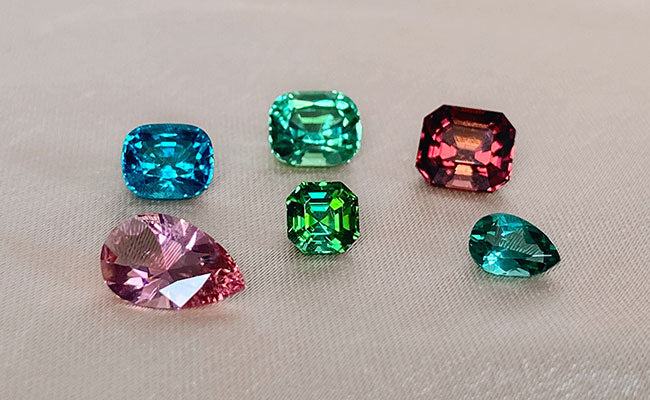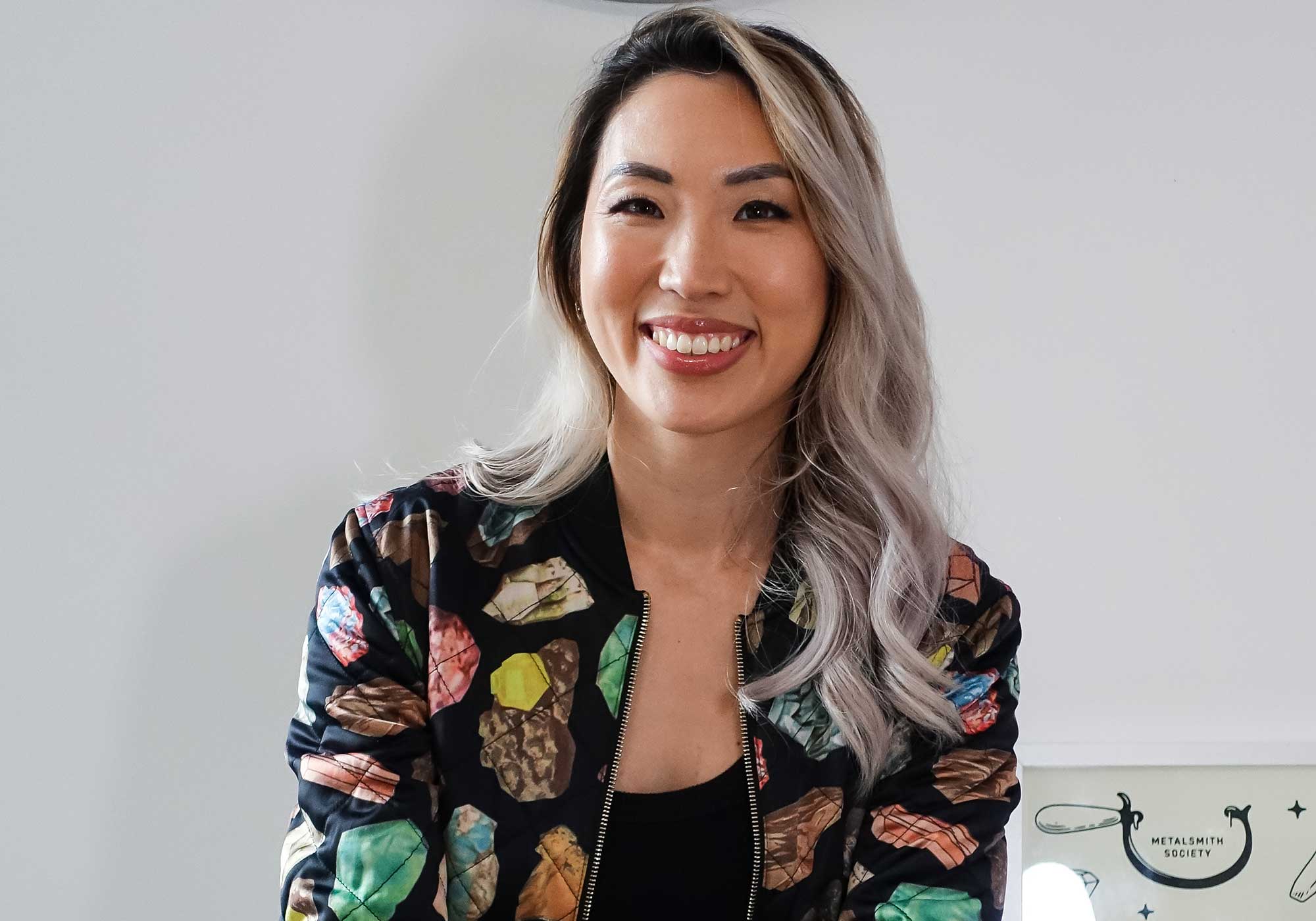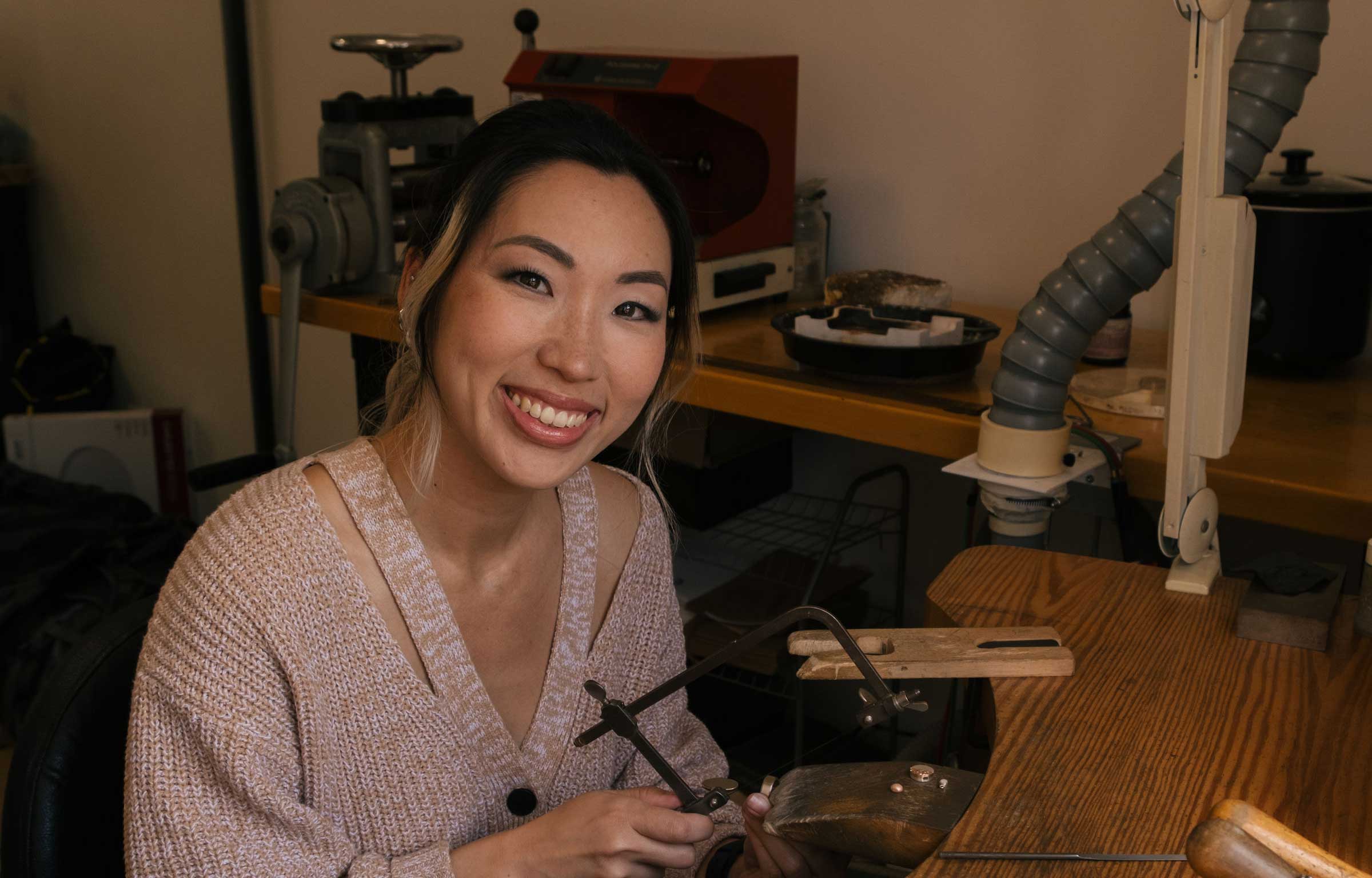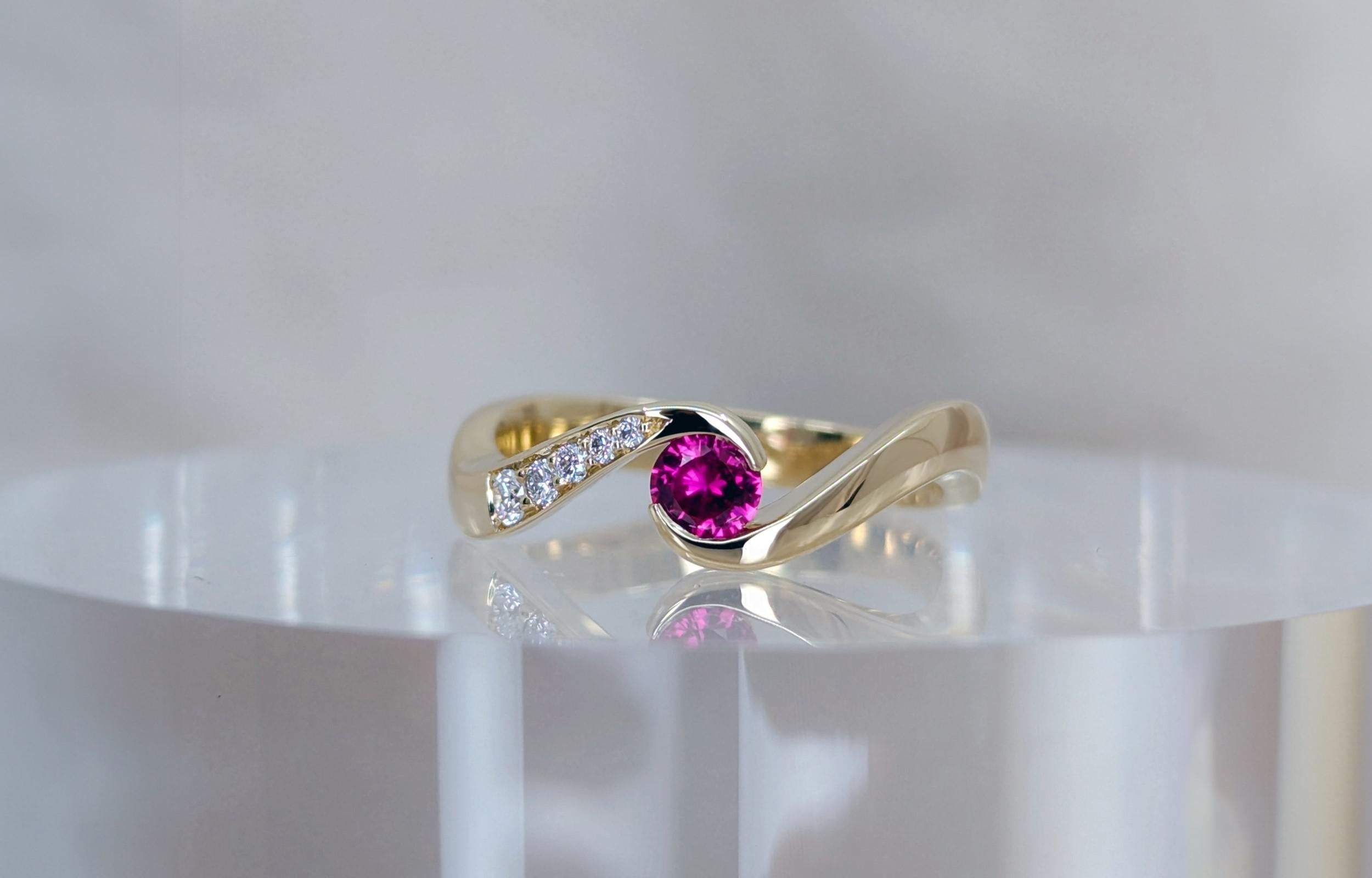
How to choose a ruby (and the one thing you need to get right)
You've seen it on Pinterest. On red carpets. Maybe even in your dream ring. That ruby red gem that turns heads and starts conversations.
Rubies are the timeless July birthstone that has adorned royals and rulers for centuries. And if you're thinking about buying one, the pressure to get it right can be real.
Here's the one thing to know, even if you don't read any further:
The most important decision you'll make when it comes to buying a ruby isn't about colour, clarity or carat. It's about working out your priority.
In this guide, we'll cover the right questions to ask to choose a ruby that fits your budget, suits your style and tells your story (minus the jargon).
For those of you who like reading, we end this article with some frequently asked questions about the bold, beautiful ruby.
Key takeaways:
- How to find your ruby priority
- What affects the rarity of a ruby?
- Colour: What is the best colour for a ruby?
- Clarity: How rare are eye clean rubies?
- Size: Why do ruby prices increase with size?
- Origin: What's the difference between Burmese and Mozambique rubies?
- Treatments: What treatments do rubies commonly undergo?
- Final tips for a smart ruby buying decision
How to find your ruby priority
Before you start comparing colours and carat weights, take a step back. The smartest way to choose a ruby for your next piece of custom jewellery is to figure out what matters most to you.
Is it size? Colour intensity? Origin? Or a piece that fits a specific budget?

Why is working out your priority so incredibly important when it comes to buying a ruby?
With rubies - moreso than many other coloured gemstones - even small differences in colour, clarity and size can affect availability and investment. Knowing your priority helps focus your search so you can go from feeling buried in options to that moment of clarity when everything just clicks.
We call it the "when you know, you know" moment.
If you need some help working out your priority, ask yourself: What's the one thing this ruby needs to be for me?
The answer will help you work out whether you're after:
- A vivid showstopper that grabs attention the moment you walk into a room
- A stone that balances beauty and budget
- A unique red hue that feels unmistakably 'you'
- A ruby with unusual inclusions that give it personality and depth
- A gem in an unexpected shape that breaks the rules in the best way possible

Your priority is personal. And sometimes, it doesn't become obvious until you've seen a few stones, asked some questions and noticed what you're consistently drawn to.
But once your priority is clear, every other decision feels much much simpler.
What affects the rarity of a ruby?
Now that you know your priority, it's time to understand what makes some rubies rarer than others.
Rarity comes down to how often a gem with specific, desirable characteristics occurs in nature (or is available on the world market). Natural rubies vary widely in appearance, and the rarest combinations are the ones that are least frequently found.
Factors like colour, clarity, size, origin and treatments all play a part in how rare (and sought-after) a ruby really is.
Colour: What is the best colour for a ruby?
Colour is one of the biggest value drivers. The most prized rubies are rich, vivid red, sometimes described as "pigeon's blood". But not every beautiful ruby fits this mould. Some are red with pink, purple or orange undertones. Some glow from within, thanks to silky inclusions that scatter the light. While tradition may point to "pigeon's blood" as the pinnacle of ruby perfection, not everyone is chasing the textbook version. In the end, the "right" ruby is the one that speaks to you.
Clarity: How rare are eye clean rubies?
Completely eye clean rubies are extremely rare and priced accordingly. Silky inclusions, such as rutile needles, are common in rubies and can influence how light moves through the stone. Traditionally, the cleaner the ruby, the more desirable it is (although that's not to say you have to follow tradition). In some cases, inclusions create a soft, diffused glow that enhances the gem's depth and character. When these inclusions are precisely aligned in a cabochon cut or domed gemstone, they can produce a star-like optical effect called asterism, a rare phenomenon seen in star rubies.
Size: Why do ruby prices increase with size?
As with diamonds, prices jump higher as rubies get larger, especially if colour and clarity are strong. Fine quality rubies over one carat are rare, which means that prices rise steeply with each step up in size.
Origin: What's the difference between Burmese and Mozambique rubies?
The two biggest names in ruby sourcing today are Myanmar (Burma) and Mozambique.
- Burmese rubies: Burmese rubies are known for their vivid "pigeon blood" red and soft inner glow (often caused by silky inclusions). They've long been considered some of the most prestigious rubies in the world. But today, ethical concerns around the gem trade in Myanmar, along with political restrictions and international sanctions, make sourcing these stones more complex. While Burmese rubies do appear on the market, it's often difficult to verify their origin and supply chain with confidence. If traceability matters to you, this is worth discussing with your jeweller.
- Mozambique rubies: They account for over 80% of the world's ruby supply and come in a vibrant range of reds, often with better clarity than their Burmese counterparts. Mozambique rubies often come with clearer sourcing information, as large-scale operations like Gemfields can provide origin and supply chain documentation.
Treatments: What treatments do rubies commonly undergo?
Ruby treatments are used to enhance a gem's appearance, typically to deepen its colour or reduce visible inclusions. Some treatments are standard industry practice, while others can impact durability and stability. Here's what to know:
- Heat treatment: This is the most common enhancement and is widely accepted in the industry. It is considered a permanent treatment, used to intensify colour, reduce inclusions and increase stability by helping to heal internal fractures. Most rubies on the market today are heat treated. If a ruby is unheated and shows strong colour and clarity, it typically commands a higher price.
- Lead glass filling: This is a far less stable treatment and is often applied to lower grade rubies. Surface-reaching fractures are filled with a lead-based glass to improve the ruby's transparency. Fracture filled rubies are more vulnerable to damage, especially under heat, during ultrasonic cleaning or when a ring is being resized or repaired.
- Flux healing: Similar to heat treatment, flux healing involves heating the ruby with a substance like borax that melts and flows into surface-reaching fractures. While more stable than lead glass filling, flux healed rubies may still show traces of residue under magnification.
- Dyeing or coating: To improve their appearance, dyes or coloured coatings may be applied to pale or heavily included rubies that wouldn't otherwise be marketable. However these stones are vulnerable to fading, wear and damage, making them unsuitable for everyday wear. Avoid dyed and coated rubies if longevity and quality are important to you.
Final tips for a smart ruby buying decision
Choosing a ruby doesn't have to feel like decoding a gemmology textbook.
Start with your priority. Then work with a jeweller who can guide you through the rest based on that goal.
Need help making the call? That's what we're here for.
Explore our custom design process or book a design consult to begin your storytelling journey from a place of clarity - without losing your mind over colour, cut or carat.

Ruby FAQs: Everything you wanted to know (but didn't want to Google)
Whether you're picking out a ruby for an alternative engagement ring, comparing it to a pink sapphire or wondering if lab grown is worth it, these FAQs cover the essentials.
Got a question we haven't answered? Get in touch and we'll add it to the list.
- Can I use a ruby for an engagement ring?
- What is the difference between a pink sapphire and a ruby?
- How do I design a custom piece around a ruby?
- What month is ruby the birthstone for?
- What are lab grown rubies and are they "real"?
- Are there other alternative gems that look like rubies?
Can I use a ruby for an engagement ring?
Absolutely. Rubies are one of the most durable natural gemstones, second only to diamonds. In fact, they're technically the same mineral as sapphires (corundum), which means they offer the same strength and resilience, with a bold red twist. While not indestructible, rubies are tough enough for long term, daily wear.

What is the difference between a pink sapphire and a ruby?
Both rubies and pink sapphires are composed of the same mineral: Corundum. When corundum contains more of the element, chromium, the stone appears red and is classified as a ruby. Less chromium usually results in a pinker tone, leading to a pink sapphire classification.
But not all gem labs agree on where red ends and pink begins. This means the same stone could be classified (and priced) differently depending on the lab or jeweller. Since rubies tend to be rarer, they usually come at a higher price point, so classification can affect not only what the gem is called, but how much it costs.
How do I design a custom piece around a ruby?
When designing a custom piece, we begin by understanding what matters most to you. Is it the gem's origin? A specific shade of red? A style that feels like you? From there, we guide you through all the little details that bring it to life. Book a custom design consult or prompt some storytelling design ideas with Storysmith.
What month is ruby the birthstone for?
Ruby is the birthstone for July. As one of the most historically significant coloured gems, ruby has symbolised power and protection across cultures, and remains a popular choice for milestone gifts, birthstone pieces and heirloom jewellery.
What are lab grown rubies and are they "real"?
Both natural and lab grown rubies are real rubies. They have the same chemical composition and the same characteristics. The key difference lies in how they're formed and how widely available they are:
- Natural rubies: Natural or mined rubies are created by the earth over millions of years, and often come with inclusions, colour zoning and quirks that speak to their geological origins.
- Lab grown rubies: Otherwise known as lab created rubies, these gems are made by humans in a controlled environment that replicates the same conditions that they would experience in the earth, over a much shorter period of time. Lab grown rubies tend to have a more consistent deep red to reddish pink colour and appear much cleaner than most natural rubies.
How do you choose between a lab grown ruby and a natural ruby? If you love the idea of a gem with a one-of-a-kind backstory and have the budget for it, a natural ruby might be your pick. If you're after a larger, cleaner stone in a limited budget, a lab grown ruby could be the better fit.
Are there other alternative gems that look like rubies?
If you're drawn to deep reds but want something a little different, spinel and garnet are two standout alternatives.
Red spinel is often mistaken for ruby. In fact, some of the world's most famous "rubies," including the Black Prince's Ruby (part of the British Crown Jewels and set in the British Imperial State Crown) are actually red spinels. Spinel offers excellent sparkle and toughness, although it isn't quite as hard as ruby.
Almandine red garnet is another common ruby alternative, and tends to have an earthier reddish brown undertone. It's softer than both ruby and spinel, making it less suited to engagement rings and more suited for occasional pieces.
If you're after options that are more affordable than rubies and don't mind a trade-off in durability, spinel and garnets are gems worth exploring.
Find your ruby
We work with gem merchants all over the world to source stunning, one-of-a-kind rubies and coloured gemstones. Book a custom jewellery consult to find yours.

